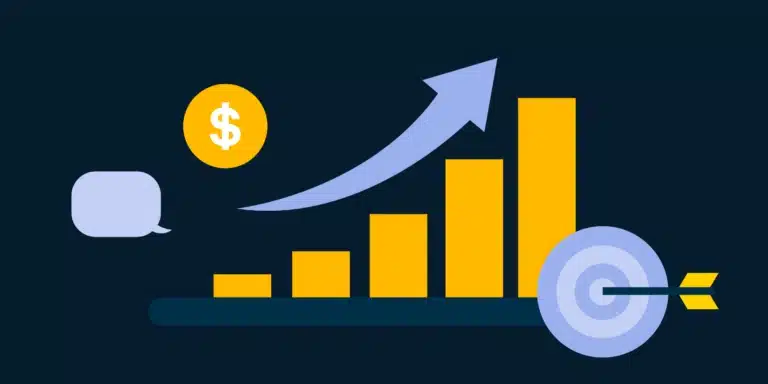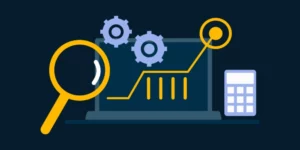The KPIs Companies Should Use at Each Stage of Growth
As the economic outlook continues to be unpredictable, making for a challenging funding environment, today’s businesses need to focus more than ever on measuring and performing against their Key Performance Indicators (KPIs).
KPIs can differ from company to company and are also dependent on what stage in their lifecycle they are currently in. For example, pre-seed and seed businesses may not yet be revenue-generating, so they should focus on non-financial metrics such as engagement and early adoption rates. In contrast, later-stage companies in Series B and Series C stages should be more centered around revenue measures, including recurring revenues and revenue growth rates.
To ensure you stand the best chance of receiving funding in today’s challenging environment, you’ll need to measure the most relevant KPIs for your company, depending on where your company is on its journey.
Pre-Seed and Seed
Companies in pre-seed and seed stages are unlikely to have built up significant revenues or could be in pre-revenue stages. As a result, KPIs should focus more on users and engagement rates, with the view that these will lead to revenue-generating customers over the longer term.
Early Adopters
Early-stage companies should encourage as many customers as possible to try out their product or service at or immediately after launch.
A high customer number indicates long-term market demand for your target audience and the potential to gain momentum. Additionally, this can also be an indicator of how well your marketing and customer acquisition strategies are performing.
User Engagement Rates
User engagement measures the activity of early adopters. For pre-revenue businesses, this can be measured in several different ways, including:
- Time spent on the platform
- Active users—Early adopters who are actively engaging with your product
- Feedback and ratings—Incentivizing users to share their experiences by offering perks or running competitions can help with getting the feedback you need
Series A
Businesses in the Series A stage should have already received market validation, so their KPIs should be focused on revenue and sales efforts.
Sales Close Rate
The sales close rate measures the percentage of sales opportunities that are closed.
Series A businesses should seek this to be as high as possible to convert leads and opportunities into sales. A low rate suggests that there could be an issue with the sales process, such as a lack of training or the need for additional resources, such as CRM tools.
Measuring this over time allows management to understand better the sales process and how to improve numbers before their next round of funding.
Cost Per Lead
Cost per lead should be considered in relation to the sales close rate, as a high sales close rate may make it easier to justify a higher cost per lead.
This can be calculated by taking the cost of an advertising campaign and dividing it by the number of leads generated from that campaign. Most companies will likely have different acquisition channels (i.e., Facebook, Google, Twitter), so cost per lead should be compared against each channel and as an overall value in its own right.
Series B
Series B businesses will have already proven their concept and demonstrated their high-growth potential. As a result, KPIs should center around the company’s continuing ability to scale.
Revenue Growth Rate
The revenue growth rate shows how fast revenue is being generated across periods. It is a critical measure for Series B businesses because if it slows down, it can indicate limited room for growth in their target market.
Revenue growth is calculated by dividing the difference between the revenue in one period against the previous period’s revenue and multiplying it by 100.
Monthly Recurring Revenue (MRR)
MRR is relevant for subscription-based Series B businesses, helping indicate future revenue. This allows companies to plan for future growth and customer acquisition investments.
It measures repeating monthly revenue (from subscriptions and contracts) but, to be meaningful, should exclude one-off sales. A more prudent approach also excludes future revenues from customers at risk of churning.
Series C
At this stage, companies should be scaling even more rapidly and seeking to keep up the pace of growth by expanding into new markets. Series C KPIs should cover sustainability measures, including generating consistent cash flow and boosting customer retention.
Earnings Before Interest, Tax, Depreciation, Amortization (EBITDA)
Your EBITDA shows your company’s ability to generate cash by stripping out non-cash movements, including depreciation and amortization. Series C businesses may be moving towards a pathway to profitability and want to extend their runway, so they should focus on demonstrating high positive EBITDA values.
EBITDA values should be reviewed monthly to help ensure you are prepared for short- or medium-term cash deficits.
Net Promoter Score (NPS)
NPS measures customer loyalty and dissatisfaction and is calculated based on customers answering how likely they are to recommend your product/service with a score between 0-10.
A high NPS score indicates that you will likely retain existing customers and convert new ones based on referrals.
Series D
By Series D, you’ll likely be a relatively mature company showcasing a proven business model and the ability to generate significant revenue.
At this stage, you should consider getting ready to go public (IPO) by increasing profitability and launching new products.
Net Income
Net income demonstrates a business’s profitability by deducting all expenses from total revenues.
A strong positive net income shows that entities are profitable and sustainable in their own right, instilling confidence in shareholders, employees, and customers.
Customer Lifetime Value (CLV)
Customer lifetime value represents customers’ overall value throughout their relationship with a company.
Series D businesses need their CLV to be significant to continue investing in customer acquisition and demonstrate their long-term potential.





